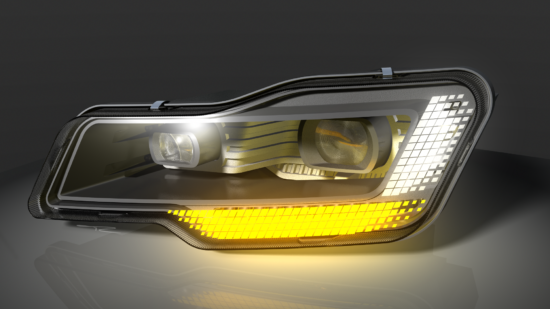Forvia Hella presents sustainable headlamp concept
 Forvia Hella’s sustainable headlamp concept combines sustainability, high performance and functionality in a cost-neutral way (Photo: Forvia Hella)
Forvia Hella’s sustainable headlamp concept combines sustainability, high performance and functionality in a cost-neutral way (Photo: Forvia Hella)
Forvia Hella presented its sustainable headlamp concept at the Consumer Electronics Show (CES) in Las Vegas. Reducing the carbon footprint of a conventional headlamp by up to 70 per cent across its life cycle, the headlamp also weighs 60 per cent less, at 2kg, compared with the average headlamp’s 5kg. The concepts integrated into the concept include the use of fewer components, with the ability to replace individual parts of the headlamp, and the use of sustainable materials, such as bio-based plastics and recycled materials.
“We want to shape the mobility of the future with product solutions that are both innovative and particularly sustainable, and which benefit customers, consumers as well as the environment,” says Yves Andres, who is responsible for Forvia Hella’s global lighting business as a member of the Management Board. He adds that the nearseries headlamp “demonstrates the possibilities of harmonising sustainability and performance without having to compromise on safety and comfort.”
Compared to LED headlamps currently on the market, the concept is based on three basic principles: less, better, longer. Firstly, based on a completely new design principle, significantly fewer components are used, purely decorative components with no function are omitted and replaced by elements that are required for structural purposes.
Secondly, materials such as bio-based plastics or recyclates, for example from recycled drinks bottles, are primarily used. A SSL48 light module is integrated. On the one hand, this requires significantly less installation space thanks to a highly efficient optical lens. On the other hand, it implements lighting functions software-based only, reducing the efforts required for different headlamps variants and enabling subsequent upgrades.
Thirdly, unlike conventional headlamps, it should also be possible to replace and repair individual parts in order to extend the service life of the headlight and significantly increase the recycling rate of the components used.
Forvia Hella adds that the overall concept of the sustainable headlamps is designed to be cost-neutral. Installing reused components, reducing component requirements, and reducing overall weight mean that the cost of higher quality materials is offset.
Andres concludes: “With our headlamp concept, we have proven that sustainability, performance and functionality are not contradictory. In the next step, we want to further develop and deepen the approaches of our sustainable headlamp together with our customers and bring them closer to possible series projects in the medium term.”
Forvia Hella has designed the headlamp to make it possible to replace individual components (Photo: Forvia Hella)


 HEVRA
HEVRA


Comments